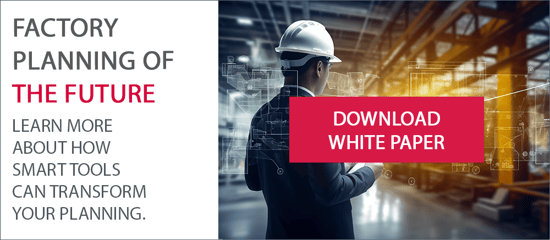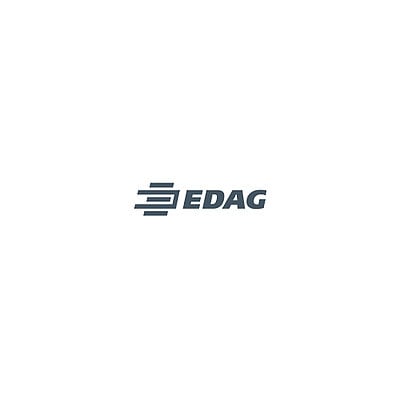Industrial manufacturing is undergoing rapid change: new technologies, changing business models, agile production processes and growing cost pressure are forcing companies to constantly adapt. Production lines are being retooled or relocated, while machine operators and maintenance staff need to be quickly prepared for new processes.
How can companies ensure that employees are optimally prepared for new processes? How can efficient and practical training be carried out while avoiding costly and time-consuming training on real machines? One efficient solution is to automatically transfer planning data into training applications in order to optimally train employees before commissioning or before changes are made to the production line.
Digital twins and virtual reality (VR): realistic training before the start of production
With the help of digital twins and virtual reality, workers and maintenance staff can be trained via an application in the Industrial Metaverse even before the actual construction or conversion of a production line. Operators are shown a digital, visual image of the factory or the new production line using VR glasses. This gives them a complete overview of the production environment and allows them to try out the work steps that they will have to carry out later in the real factory in the virtual production environment.

Figure 1: EDAG: Example illustration from the "Pick & Place" process step of a VR training reference
Efficient creation of VR training courses through automatic transfer of planning data
EDAG has developed a software solution based on an interface between the Omniverse development platform and the emaWD software. This solution automates the use of 3D planning data for VR training. Existing CAD and simulation data is transferred to the VR training application on the basis of algorithms. There is no need for complex VR programming. The operating instructions only need to be prepared in a didactic manner suitable for the target group.

Figure 2: EDAG: Graphic "Automatic transfer of planning data to VR training"
Key advantages of creating VR training based on planning data:
- Use of existing planning data enables early training
- Low creation effort, as VR programming is not required
- Target group-oriented training through didactic
- Cost and time savings
Involve production management and maintenance at an early stage
However, VR training offers more than just training benefits. A major advantage of the VR application is that production managers and maintenance staff can also be actively involved in the planning phase in order to feed feedback back to the production planners. Errors and inefficiencies, which previously only became visible at a later stage of production and which multiply with each subsequent process step according to the "Rule of Ten", are identified and eliminated at an early stage. Workarounds and lengthy iteration loops are avoided. Start-up times and costs are reduced.
Companies that rely on VR-supported training benefit in several ways:
- Faster training of workers
Employees are productive more quickly thanks to pre-learned processes and can get straight to work.
- Reduced error rate
Errors in real production are minimized; they can be made and corrected in the simulation
- Cost savings
Virtual training in the planning phase avoids cost-intensive training and modification costs for real production facilities.
- Early feedback for optimized processes
Production management, operators and maintenance staff can check simulations and identify optimization potential before the physical system is built. Necessary adjustments in later project phases are avoided and production processes can be optimized.
Conclusion: Virtual training solutions as a competitive advantage
The use of virtual training enables industrial companies to make production start-ups more efficient, faster and more cost-effective. By using planning data directly, VR training can be created without a high level of programming effort. Employees are already optimally trained at the start of production, errors are detected at an early stage and unnecessary costs due to late adjustments are avoided.
At a time when flexibility and efficiency are crucial, virtual training offers a clear competitive advantage for modern production companies. Read more about this topic in our webflyer.
Would you like to find out more about the possibilities and structure of VR training? Talk to Philipp Hummel, Senior Manufacturing Engineer, EDAG PS, or to Jan Berner, Head of Technology and Processes, Feynsinn. Or download our free whitepaper "Digital production and logistics planning as the key to future-proof production" here.
Published on: 03.04.2025
Last updated on: 07.10.2025






